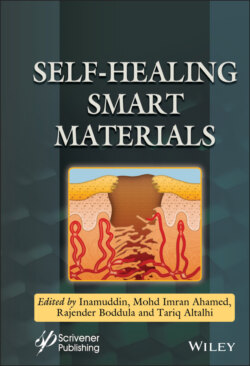Читать книгу Self-Healing Smart Materials - Группа авторов - Страница 24
2.4 Conclusion
ОглавлениеIn this chapter, self-healing and shape memory systems based on benzoxazines are reviewed. The results demonstrate that it is possible design various different smart materials by using benzoxazines. In general, polybenzoxazines with soft segments such as poly(propylene oxide)s (Jeffamines) can be exhibit self-healing ability with different levels of success. The healing mechanisms can be autonomous or stimuli induced types depending on the design of polybenzoxazines. Especially, in terms of autonomous healing systems, the hydrogen bonds of polybenzoxazines can be exploited. However, from the practical point of view, the hydrogen bonding in polybenzoxazines must augmented for successful results by additives or designing special benzoxazines. Moreover, by mixing benzoxazine resins with suitable polymers shape memory polymers can be obtained easily after a simple curing process. Soft polymers such as polysiloxanes, epoxies, poly(-caprolactone)s were proven to be useful for this purpose. These polymers act as “switch” and polybenzoxazine as hard segments provide the “fix points” in SMPs. As stated in the introduction, the design flexibility of benzoxazine chemistry is vast and just by switching between phenols and primary amines, many different benzoxazines with designed properties can be synthesized. Actually, the potential of benzoxazine chemistry in designing smart materials has not been recognized widely. However, the pioneering studies in this line clearly reveal that there will be intensive studies to develop new smart materials by using benzoxazine resins. Particularly, different healing strategies or SMPs based on benzoxazine resins would be one of the major interest in both academia and industry.
